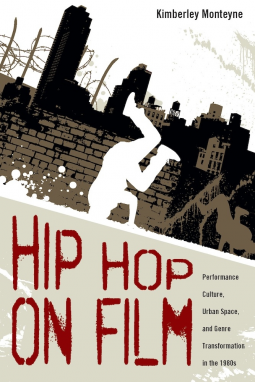
Hip Hop on Film
Performance Culture, Urban Space, and Genre Transformation in the 1980s
by Kimberley Monteyne
This title was previously available on NetGalley and is now archived.
Send NetGalley books directly to your Kindle or Kindle app
1
To read on a Kindle or Kindle app, please add kindle@netgalley.com as an approved email address to receive files in your Amazon account. Click here for step-by-step instructions.
2
Also find your Kindle email address within your Amazon account, and enter it here.
Pub Date Oct 01 2013 | Archive Date Dec 05 2013
Description
A reclamation and interpretation of a once-dismissed aspect of American film history
Early
hip hop film musicals have either been expunged from cinema history or
excoriated in brief passages by critics and other writers. Hip Hop on
Film reclaims and reexamines productions such as Breakin’ (1984), Beat
Street (1984), and Krush Groove (1985) in order to
illuminate Hollywood’s fascinating efforts to incorporate this nascent urban
culture into conventional narrative forms. Such films presented musical
conventions against the backdrop of graffiti-splattered trains and abandoned
tenements in urban communities of color, setting the stage for radical social
and political transformations. Hip hop musicals are also part of the broader
history of teen cinema, and films such as Charlie Ahearn’s Wild Style (1983)
are here examined alongside other contemporary youth-oriented productions. As suburban teen films banished parents and children to
the margins of narrative action, hip hop musicals, by contrast, presented
inclusive and unconventional filial groupings that included all members of the
neighborhood. These alternative social configurations directly referenced specific
urban social problems, which affected the stability of inner city families
following diminished governmental assistance in communities of color during the
1980s.
Breakdancing, a central element of hip hop musicals, is also reconsidered. It gained wide-spread acclaim at the same time that these films entered the theaters but the nation’s newly-discovered dance form was embattled—caught between a multitude of institutional entities such as the ballet academy, advertising culture, and dance publications that vied to control its meaning, particularly in relation to delineations of gender. As street-trained breakers were enticed to join the world of professional ballet, this newly-forged relationship was recast by dance promoters as a way to invigorate and “remasculinize” European dance, while young women simultaneously critiqued conventional masculinities through an appropriation of breakdance. These multiple and volatile histories influenced the first wave of hip hop films, and even structured the sleeper hit Flashdance. This forgotten, ignored, and maligned cinema is not only an important aspect of hip hop history, but is also central to the histories of teen film, the postclassical musical, and even institutional dance. Kimberley Monteyne places these films within the wider context of their cultural antecedents and reconsiders the genre’s influence.
Kimberley Monteyne, Vancouver, British Columbia, Canada, is currently teaching at the University of British Columbia and has also taught at New York University and the Chelsea College of Art (UK). Her work has appeared in Youth Culture in Global Cinema, edited by Timothy Shary and Alexandra Seibel.
256 pages (approx.), 6 x 9 inches, 25 b&w illustrations, bibliography, index
Available Editions
| EDITION | Hardcover |
| ISBN | 9781617039225 |
| PRICE | $60.00 (USD) |



